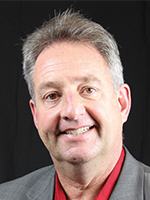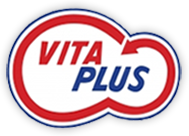
Management considerations for new multisite dairies
 By Bob Hagenow, Vita Plus regional business manager
By Bob Hagenow, Vita Plus regional business manager
Long-term growth in dairy operations is the lifeblood of the industry. A farm’s growth can allow for more profitability, give space for new generations to enter the business and make it possible to adopt new technologies to become more sustainable.
In recent years, it’s become more common to see dairies expand to facilities on separate sites. This is driven by constraint on the original dairy’s footprint, efficiency losses when a site becomes too big, or a good opportunity to partner with or purchase another dairy.
Multisite options
Building a brand-new dairy is one way to establish a multisite operation. The difficulty in finding a site and getting permits, the high cost of turn-key construction, the lack of cow availability to populate a new site, and the challenge of marketing the new milk has made this option less feasible.
The other way to grow into multiple sites is to assume ownership or operation of an existing dairy. Numerous dairies are presently at a crossroads where they can’t or do not want to grow. Transitioning the intact operation to another farm is an attractive option.
For the expanding farm, the facilities, cows, manure system, feed system, employees, and other infrastructure are already there. The income stream starts immediately, and a milk market is generally in place. Additionally, concentrated animal feeding operation (CAFO) and other permits are already obtained. The cost of any remodeling or retrofitting will likely be substantially less than new construction.
If the home herd is crowded, managers can improve cow comfort and performance by sending cows to the new location. The farm can gain efficiencies by designating one of the sites as a milking cow-only site with no calving, reproduction work or udder treatment. A new location may also help the farm gain land base for all operations and boost forage production. The business will have more time to grow equity to expand to a completely new site and make existing facilities useful in the future.
For the exiting farm, moving ownership to a new group offers a chance to pass a viable operation to someone else and keep a farm’s legacy as a dairy operation. Owners can adjust their lifestyles, and the team can become part of a new culture.
Ask the right questions
I recently had the opportunity to observe a farm business assume the operation of another existing dairy.
Some key considerations in successful transition include:
- Ask if the management team on the expanding farm is ready to take this on. Having someone who is passionate about the venture and dedicated to overseeing the details is vital.
- Consider the proximity of the new site. When the operations are physically close, it’s an advantage to be engaged in-person. Assessment of the current facilities, understanding the nuances of the culture, and observing cow comfort and parlor operation are not likely accomplished in one-and-done visits to construct a quality agreement between the parties.
- When not physically on site, how are checklists, processes, or technologies used to delegate tasks, track progress, and follow up on assigned duties? This transition process requires competence and trust from everyone involved.
- Know the goals of each party. Is everyone on the expanding dairy ready to take on extra work and make this transition? Avoid an us-versus-them mentality by having clear goals in the exploration, negotiation and agreement phases of transition.
Other questions farm owners may need to answer during this transition:
- Does the new site trigger the need for or changes to a CAFO permit or other permits?
- If cows or youngstock remain at the exiting dairy, how will they be priced?
- If home cows are part of the population of the new site, which cows will go there and how will they be managed?
- How will young stock be managed with the extra animals from the new site? Will modifications need to be made to existing wet calf and grower facilities?
- If feed inventories on the exiting farm will be utilized, how will they be fairly priced for each party?
- How are repairs handled? How is remodeling and refurbishing paid for?
- How will manure be managed and valued if it’s applied to a land base that isn’t needed to make forage?
- Are herd and feed management software systems compatible? If not, how will data be integrated into a system so it can be a reliable tool in making business and herd decisions?
- If the exiting dairy’s team is rehired and part of the new culture, how will the new roles be defined and how will everyone be held accountable?
- How will communication take place between employees and leaders at each facility?
Developing successful multisite dairies require dealing with many other details and decisions. The road map to get to a successful end can have many miles and some detours. However, when done properly, the outcome can meet the goals and objectives of all parties and be rewarding for everyone involved.
This article was originally published in the March 2025 issue of Hoard’s Dairyman.
| Category: |
Business and economics Dairy Performance |

